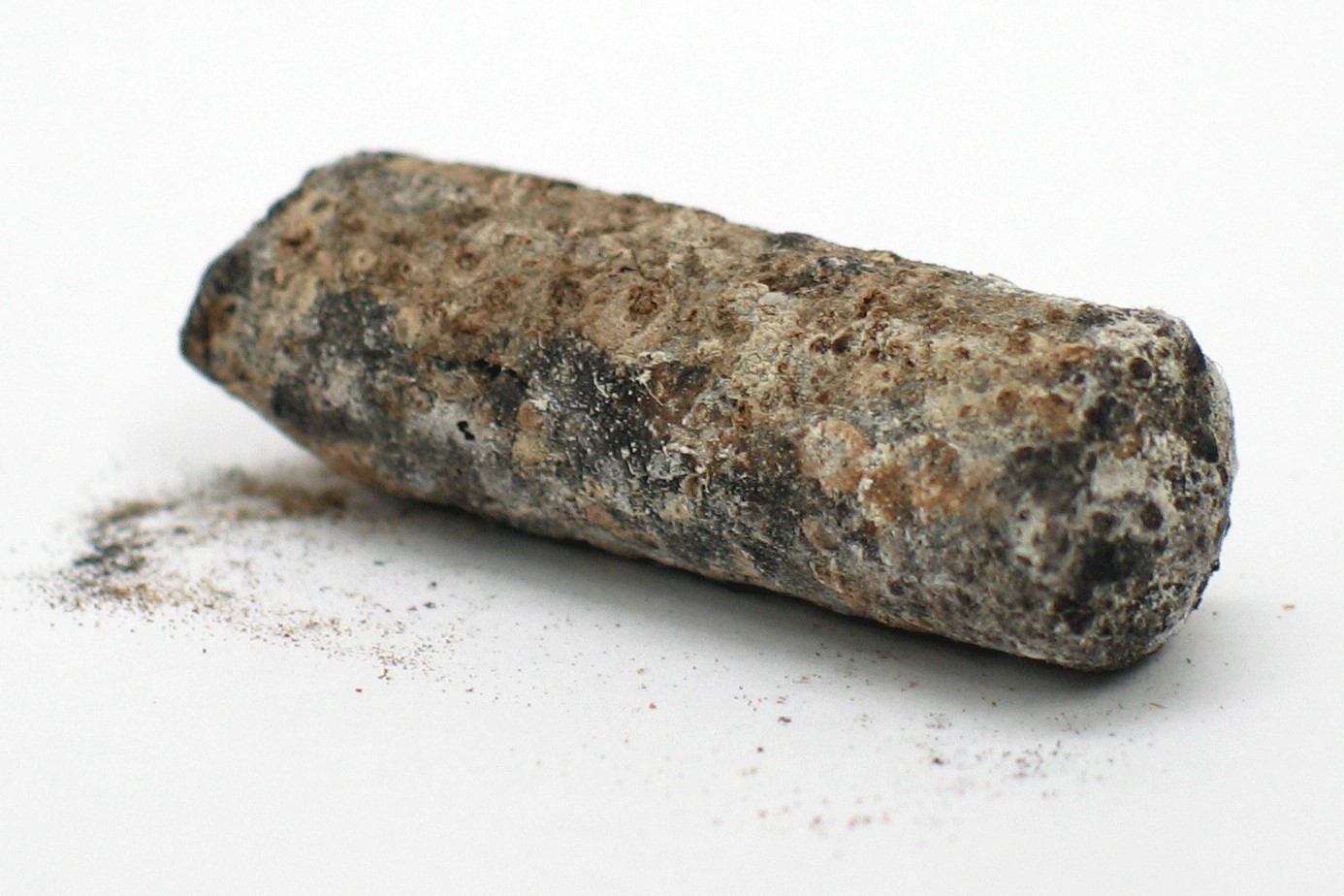
Thallium might not be a household name, but this element has a fascinating story. Found in trace amounts in the Earth's crust, thallium is a soft, malleable metal with a bluish-gray hue. Used in everything from electronics to medical imaging, it plays a crucial role in modern technology. However, thallium is also highly toxic, earning it the nickname "poisoner's poison." Even small amounts can be deadly, making it a substance of great interest in both science and crime. Want to learn more? Here are 40 intriguing facts about thallium that will surprise and educate you.
Key Takeaways:
- Thallium is a fascinating but toxic element with unique physical properties and diverse uses, but its presence in the environment can have significant effects on ecosystems and human health.
- Despite its toxic nature, thallium's unique properties continue to fascinate scientists and researchers, making it a subject of ongoing scientific research and potential applications in various fields.
What is Thallium?
Thallium is a chemical element with the symbol Tl and atomic number 81. It is a soft, malleable metal that can be cut with a knife. Let's dive into some fascinating facts about this intriguing element.
- Thallium was discovered in 1861 by Sir William Crookes while he was investigating the residues of sulfuric acid production.
- The name "thallium" comes from the Greek word "thallos," meaning a green shoot or twig, due to the bright green spectral line it produces.
- Thallium is found in trace amounts in the Earth's crust, typically in minerals like crooksite and lorandite.
- This element is highly toxic and has been used historically as a rat poison and insecticide.
- Thallium sulfate, a compound of thallium, was once widely used to kill rodents and ants.
Physical Properties of Thallium
Thallium has some unique physical properties that make it stand out among other elements. Here are some key characteristics.
- Thallium is a post-transition metal, which means it has properties of both metals and non-metals.
- It has a melting point of 304°C (579°F) and a boiling point of 1,473°C (2,683°F).
- Thallium is a bluish-gray metal that tarnishes quickly when exposed to air, forming a bluish-gray oxide layer.
- It is one of the few metals that can be cut with a knife due to its softness.
- Thallium has a density of 11.85 grams per cubic centimeter, making it denser than lead.
Uses of Thallium
Despite its toxicity, thallium has several important applications in various fields. Here are some of its uses.
- Thallium is used in the production of low-melting glass, which is essential for certain optical lenses and electronic components.
- It is also used in the manufacture of infrared detectors and sensors, which are crucial for night vision equipment.
- Thallium-based compounds are used in the medical field for diagnostic imaging, particularly in stress tests for heart disease.
- Thallium bromide-iodide crystals are used in infrared optics due to their ability to transmit infrared light.
- Thallium is used in high-temperature superconductors, which are materials that conduct electricity without resistance at very low temperatures.
Health Effects of Thallium
Thallium's toxicity makes it a substance of concern for human health. Here are some facts about its health effects.
- Thallium poisoning can occur through ingestion, inhalation, or skin contact, leading to severe health issues.
- Symptoms of thallium poisoning include hair loss, nerve damage, and organ failure.
- Thallium interferes with the body's potassium channels, disrupting cellular function and leading to toxic effects.
- There is no specific antidote for thallium poisoning, making early detection and treatment critical.
- Thallium exposure can be detected through blood and urine tests, which measure the levels of the metal in the body.
Environmental Impact of Thallium
Thallium's presence in the environment can have significant effects on ecosystems. Here are some key points about its environmental impact.
- Thallium can enter the environment through industrial processes, such as mining and smelting.
- It can accumulate in soil and water, posing a risk to plants and animals.
- Thallium is highly toxic to aquatic life, affecting fish and other organisms in contaminated water bodies.
- Plants can absorb thallium from contaminated soil, leading to potential entry into the food chain.
- Efforts to monitor and regulate thallium emissions are essential to protect environmental health.
Thallium in Popular Culture
Thallium has made appearances in various forms of popular culture, often due to its toxic properties. Here are some interesting examples.
- Thallium was used as a murder weapon in Agatha Christie's novel "The Pale Horse," where its symptoms were described in detail.
- The element has been featured in several TV shows and movies as a method of poisoning, highlighting its deadly nature.
- Thallium's toxicity has made it a subject of interest in true crime stories and forensic investigations.
- Despite its dangerous reputation, thallium's unique properties continue to fascinate scientists and researchers.
- Thallium's role in popular culture underscores the importance of understanding and respecting its hazardous nature.
Interesting Facts About Thallium
Here are some additional intriguing facts about thallium that you might find surprising.
- Thallium is one of the few elements that can form amalgams with mercury, which are used in certain types of thermometers.
- It is also used in the production of special glasses that have a high refractive index, making them useful for optical instruments.
- Thallium can be alloyed with other metals to improve their corrosion resistance and mechanical properties.
- The element has been studied for its potential use in cancer treatment, although its toxicity remains a significant challenge.
- Thallium isotopes are used in nuclear medicine for diagnostic imaging and research purposes.
Thallium in Science and Research
Thallium continues to be a subject of scientific research due to its unique properties and potential applications. Here are some facts about its role in science.
- Thallium is used in the study of superconductivity, particularly in the development of high-temperature superconductors.
- Researchers are exploring the use of thallium compounds in the development of new materials with unique electronic and optical properties.
- Thallium isotopes are used in nuclear physics research to study atomic structure and nuclear reactions.
- The element's ability to form complex compounds makes it a valuable tool in chemical research and synthesis.
- Thallium's unique properties continue to inspire new scientific discoveries and innovations.
Thallium's Intriguing Legacy
Thallium, a metal with a dark past, continues to captivate scientists and enthusiasts alike. Known for its toxicity, thallium has played roles in both medicine and crime. Despite its dangers, this element has fascinating properties that make it valuable in various fields. For instance, thallium is used in infrared detectors, optical lenses, and even in some medical imaging techniques.
Understanding thallium's history and applications helps us appreciate the complexities of chemistry and its impact on our world. While its notoriety as a poison can't be ignored, thallium's contributions to technology and science are equally significant. As we learn more about this element, we gain insights into both its risks and benefits. So, next time you hear about thallium, remember it's more than just a toxic substance; it's a testament to the dual nature of scientific discovery.
Frequently Asked Questions
Was this page helpful?
Our commitment to delivering trustworthy and engaging content is at the heart of what we do. Each fact on our site is contributed by real users like you, bringing a wealth of diverse insights and information. To ensure the highest standards of accuracy and reliability, our dedicated editors meticulously review each submission. This process guarantees that the facts we share are not only fascinating but also credible. Trust in our commitment to quality and authenticity as you explore and learn with us.


